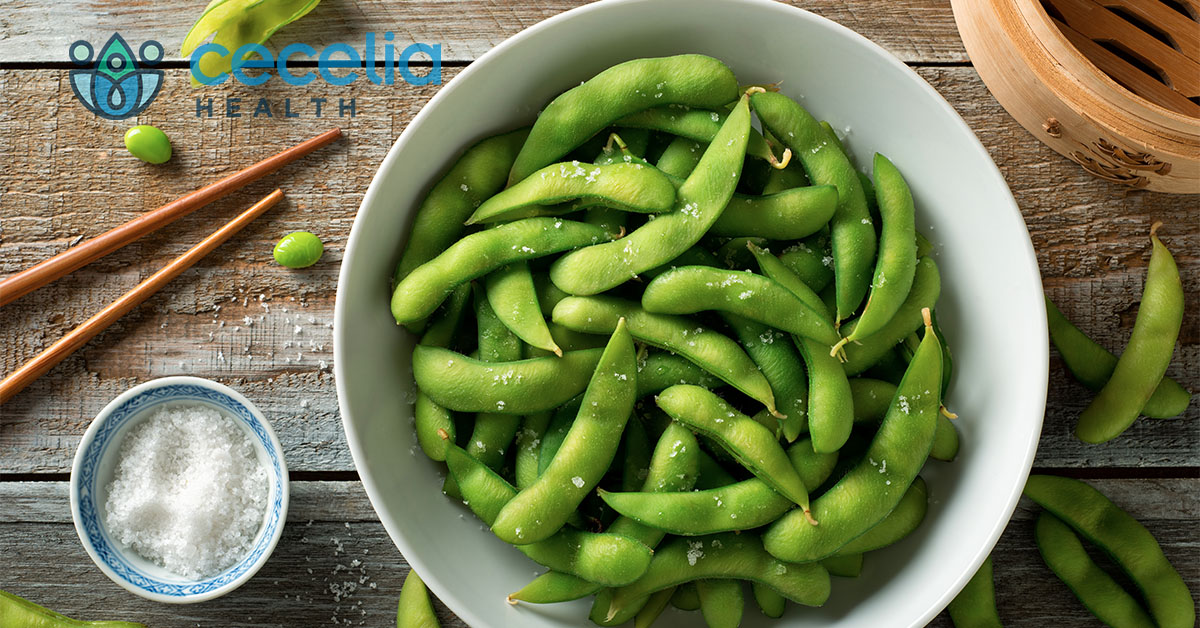When you think soy, tofu often comes to mind, but there are a variety of other soy foods try, each with health benefits that are also quite tasty! Let’s take a look at the multitude of soy products out on the market and ways to incorporate them into your diet.
- Edamame – this is soy in one of its purest forms. The soybeans are harvested when they are still green, sweet and unprocessed. You can find them in the frozen section, and they need to be cooked by boiling in water. Some edamame come in the pods that you need to remove the soybeans out of before eating and others are shelled with the beans already removed. You can even buy precooked and ready to eat edamame in the refrigerated section. Edamame are great sprinkled with a little salt or a dash of soy sauce as a snack or appetizer. You can also add them to salads or even blend them into a dip. Edamame is high in protein and fiber, low in fat, and contains vitamins and minerals (such as Vitamin A, Vitamin C and iron).
- Mature whole soybeans – in contrast to edamame, mature soybeans are left to grow more in the pod and ripen into a dry hard bean which can be yellow brown or black. They can be used in place of other dried beans in cooking, such as in soups, stews or simply roasted. They are commonly found in natural food stores. You can also buy pre-roasted soybeans, aka soy nuts, to have as a snack or sprinkle on salads. Mature soybeans have a similar nutrition profile to edamame as do soy nuts, but commercial soy nuts often have added salt and seasonings.
- Soy sauce and miso paste – soy sauce is a liquid made from soybeans that have been There are two types: shoyu and tamari. Shoyu is a blend of soybeans and wheat, whereas tamari contains only soybeans. Soy sauce is used a condiment and in various recipes such as dressings/sauces. Miso is a salty soy paste made from fermented soybeans. It has a rich earthy flavor to use in sauces, marinades and dressings. Soy sauce does not have much nutritional value. it is low in calories, doesn’t contain much protein and it is very high in sodium. You can use it sparingly and there are lower sodium varieties available on the market as well. Miso is also high in sodium and low in protein but does contain some vitamins and minerals, as well as probiotics from the fermentation process.
- Soy butter – is a spread made from roasted soybeans blended with oil and salt. It can be used as a peanut butter substitute for those allergic to nuts. It has a similar nutrition profile as peanut butter, but its flavor comes across a bit stronger than other nut butters.
- Textured soy protein and other meat alternatives – textured soy protein is product made from defatted soy flour that is compressed into granules or chunks which are rehydrated during cooking. It can be used as a meat substitute and is also an ingredient in meat alternative products such as veggie burgers, veggie hot dogs and veggie lunch meats. Textured soy protein and meat alternatives are plant-based, high in protein and fiber but they are also processed so they can contain sodium and other additives. Check labels and try to balance your intake of them with other fresh whole foods. They can be helpful to use in place of meats in burger, sandwich and taco recipes.
- Soymilk – is a milk created by soybeans that have been soaked, finely ground and strained. There are both refrigerated and unrefrigerated varieties available and some come flavored with vanilla or chocolate. Soy milk can be used in place of milk as a beverage or in reci Many varieties are fortified with vitamins and minerals so they are comparable to cow’s milk. Look on labels for added sugar and choose the unsweetened varieties when consuming to cut excess carbs/sugar.
- And….tofu – to learn more about tofu and other background information on soy check out this previous post!
